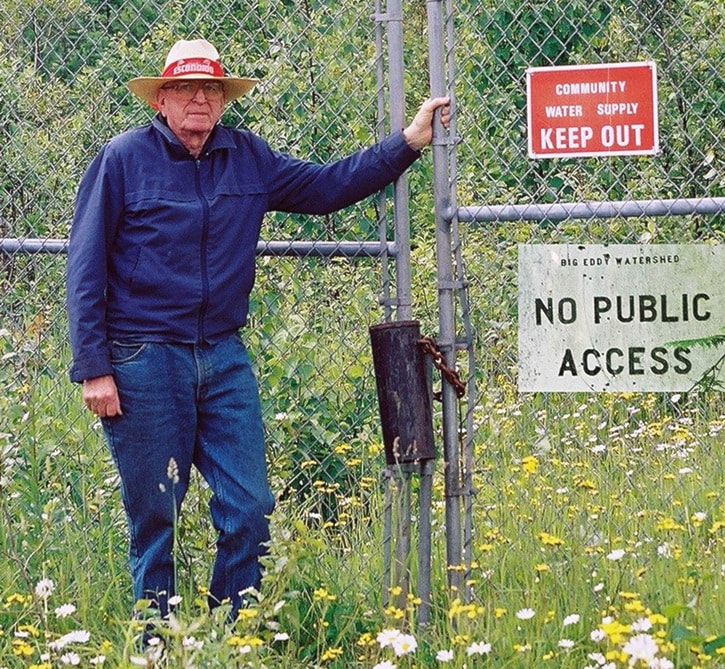Some people might think a 318-page history on the Big Eddy’s Dolan Creek watershed is excessive (344 including appendices).
For William Koop, the head of the B.C. Tap Water Alliance, his report on the Big Eddy tells a much larger story about the battle by local people to protect their watersheds in the face of incursions by forestry companies and others looking to encroach on their reserves. It speaks to watershed protection issues across the province.
“I think it’s all about empowerment. How do we uphold the things we hold dear to ourselves in the midst of the controversies brought on with the interface between private industry, that wants profits, and government that sympathizes with that in a way, I suppose,” Koop said in an interview. “How do you protect your interest in the midst of these things? I think that’s one of the important things.”
The B.C. Tap Water Alliance is a group that has fought a decades-long battle with government over watershed management issues
Times Review readers might remember Koop from earlier this year, when he sent a letter to Revelstoke council saying the city’s Greeley Creek and Dolan Creek watersheds weren’t included in a provincial list of protected watershed. A spokesperson for the B.C. Forests ministry denied Koop’s claims.
The report looks at the history of the Dolan Creek watershed from the creation of the Big Eddy Waterworks District in 1949 until recent times. In 1950, the district was able to get protection of the 440-hectare Dolan Creek watershed and Koop’s report looks at the efforts to protect the watershed since then.
The executive summary of the report paints a picture of a local group that had to constantly fight against incursions into the watershed by forestry companies and other interests, all the while the province denied the existence of a watershed reserve.
According to the report, on repeated occasions, the Ministry of Forests sought to allow logging in the Dolan Creek area, only to be rebuffed by the Big Eddy Waterworks trustees. For Koop, the actions of the government were the results of a conspiracy between it and the forest industry.
“It’s the intrigue between industry and government in this case to counteract existing legislation,” he said. “What I set forth to show is that even though the legislation is set there, and the Big Eddy had a statutory reserve, the government none the less broke the law to ordain logging in there. It is fundamentally disturbing what occurred here.
Koop made use of extensive government documents, the files of the Big Eddy Waterworks, and news reports to produce his report. The report casts an almost conspiratorial tone in describing how the government constantly attempted to subvert local watershed protections. It uses the example of the Dolan Creek watershed to look at government water policy throughout the years.
When asked why he though the government was trying to allow industry to work in protected watersheds, Koop said he didn’t know. “I think it’s the power structure between the industry and those who go to work inside the Ministry of Forests,” he said. He said people from industry often worked inside government, and their interests weren’t in protection watersheds. He specifically pointed to the Social Credit government in the late-’70s and ‘80s. He said they deliberately took out language that referenced watershed protection from a government watershed guidebook published in 1980.
“People didn’t know what kind of powers they had over their watersheds, and they were very clearly designed to be protected through legislation,” he said.
Koop said the City of Revelstoke should be pro-active in ensuring its watersheds are protected and that the Union of B.C. Municipalities should take up the issue.
“I think it’s important for the communities of Revelstoke and Big Eddy to understand this history and bring about the protection of their drinking watershed sources,” he said.
You can read the full report on the BC Tap Water Alliance website.
